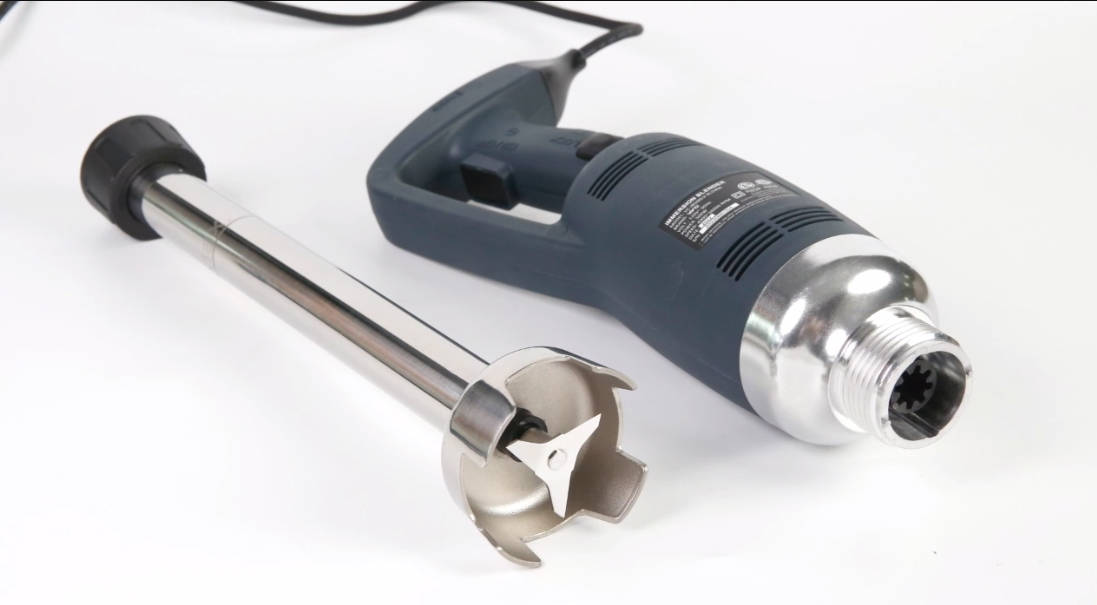Is the higher the power consumption of the mixer, the better? Technical analysis of actual needs
Mar 12,2025
378
In the purchase of kitchen appliances, the misconception that "the greater the power consumption, the stronger the performance" is widespread, and the energy conversion mechanism, power requirements, and energy efficiency standards of mixers vary depending on the scenario.

First, the physical significance and technical boundaries of power parameters
Dialectical relationship between motor power and torque
The mixing capacity of a mixer depends on the motor torque rather than pure power. A laboratory test shows that the 2000W motor can reach 30000rpm at no-load speed, but the torque when actually mixing nuts is only 15N · m; while the 1200W motor is designed with a planetary gearbox, the torque can be increased to 25N · m, and the crushing efficiency can be increased by 40%.
energy conversion efficiency curve
The motor efficiency exhibits parabolic characteristics with load changes. The test data of a brand shows that when the 1500W mixer handles 800ml ice cubes, the actual effective power accounts for only 68% of the rated power, and the rest of the energy is converted into heat energy and mechanical loss. The use of vector frequency conversion technology can increase the peak efficiency to 89% and reduce the ineffective energy consumption.
Second, the power demand matrix for different application scenarios
Usage scenarios, recommended power range, key performance indicators, typical product cases
Household daily stirring 300-800W noise ≤ 65dB, self-cleaning function, Jiuyang L18-Y928S
Commercial juice shop 1500-2500W 2 hours of continuous operation without attenuation Blendtec Total Blender
Professional baking 1000-1800W dough temperature rise control ≤ 5 ℃/min KitchenAid Artisan
Industrial Grade Crush 3000W + Metal Cutting Capability Vitamix Professional Series
III. Energy efficiency standards and long-term use costs
China energy efficiency label classification
According to the GB 4706.19-2008 standard, the energy efficiency of the mixer is divided into 5 levels. According to the data of an e-commerce platform, the annual power consumption of the first-level energy efficiency model is 38% lower than that of the fifth-level model. Calculated by the average daily use of 15 minutes, it can save about 200 yuan in electricity bills in 5 years.
The relationship between load rate and energy cost
Create a mathematical model:
Annual energy consumption cost = (power × load rate × usage time × electricity price)
Assuming that the load rate is 70% and the electricity price is 0.8 yuan/kWh, calculate the annual cost of different power models:
800W model: 0.8 × 0.7 × 0.25 × 365 × 0.8 = 40.88 yuan
1500W model: 1.5 × 0.7 × 0.25 × 365 × 0.8 = 61.32 yuan
IV. The impact of technological innovation on power demand
1. Blade geometry optimization
The German Fissler adopts a 5-blade blunt knife design and achieves the same crushing effect as the traditional 1800W model at 1200W power through hydrodynamic optimization, with a noise reduction of 12dB.
2. Intelligent power regulation system
The Panasonic MX-ZX1000 is equipped with an AI torque sensor that automatically adjusts the power output according to the hardness of the ingredients. Tests show that the power is automatically increased to 1600W when handling hard ice cubes, and reduced to 600W when stirring vegetables, reducing overall energy consumption by 27%.
Technical advice for purchasing decisions
1. The four-step method of demand diagnosis:
(1) Identify the main purpose (e.g. crushing hard objects, making milkshakes, etc.)
(2) Estimate the maximum processing capacity per shot
(3) Consider the frequency and duration of use
(4) Evaluate environmental noise requirements
2. Reference to laboratory test data
A third-party organization's test of 20 models revealed that:
(1) The correlation between power and crushing time is only 0.63 (p < 0.01).
(2) The blade material has a 41% impact on efficiency.
(3) Noise reduction design can reduce subjective noise perception by 30%
The power selection of the mixer should follow the principle of "sufficient and efficient". Blind pursuit of high power not only increases the cost of use, but also may lead to waste of resources due to redundant design. Consumers need to combine actual needs, focus on motor efficiency, blade technology and intelligent control functions, and find the best balance between performance, energy consumption and cost.
In the future, with the application of new technologies such as solid-state motors and nano-coatings, mixers will continue to evolve towards lower power consumption and higher energy efficiency.





